#australian trumpet
Explore tagged Tumblr posts
Text
Max Dupain · Angels Trumpets

Max Dupain (1911–1992) ~ Salvadorium Dalii, 1983 | src Art gallery of New South Wales view more on wordPress

Max Dupain (1911–1992) ~ Angels Trumpets, 1983 | src Max Dupain Photography more on wordPress
#Max Dupain#angels trumpets#flora#botanical#botanicals#datura#fiori#fleurs#flores#flower portrait#flowers#Australian photographer#art gallery NSW
6 notes
·
View notes
Text
Everybody wanted Italy to win the Davis Cup
Even Australia for a good half of the second set of sinner-de minaur just wanted it to be over with lol
Australian supporters had brought trumpets and saxs and I swear they were playing the notes to the ole ole ole sinner sinner chants which I am aware it’s an universal music/rhythm but like seriously guys? We’ve been all singing it to jannik for the past 2 weeks it’s his song now.. you were literally backing up the Italian fans with your orchestra… thanks I guess???
#fun facts#Davis cup#malaga 2023#jannik sinner#team Italy#Italy#Italy Australia#Davis cup final#ole ole ole sinner sinner#I should have videos of that#Italians had drums while Australians the trumpets#they were literally playing and singing the same songs#it was a beautiful melody to my ears#a pity they didn’t know the lyrics
5 notes
·
View notes
Photo

Risa Rodil’s illustrated book cover for Gabrielle Tozer’s Melody Trumpet.
1 note
·
View note
Text

Australian Trumpet shell, Syrinx aruanus, 1950s.
155 notes
·
View notes
Photo
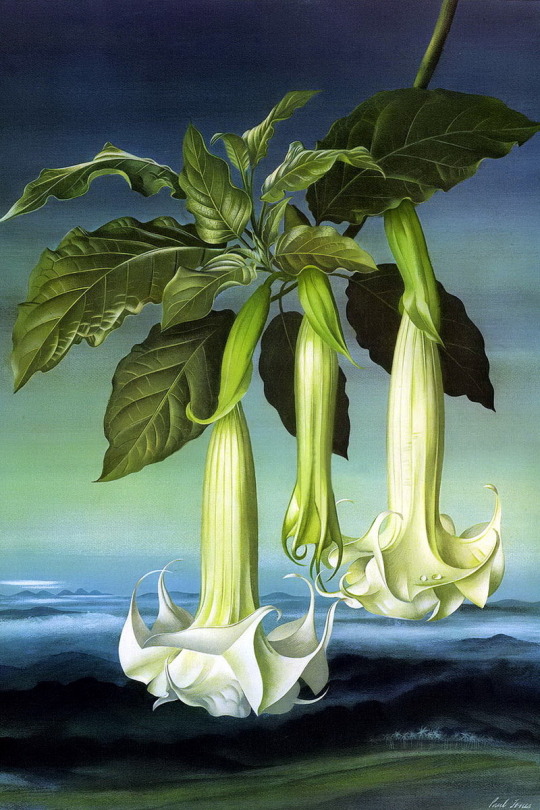
Paul Jones (Australian,1921-1997)
Datura Arborea (Angel's Trumpet), 1971
1K notes
·
View notes
Note
You should look up "australian trumpet snail"
Oh, I am Very Aware of them. The largest snail in the world at up to 44 pounds! That’s a lot of mollusk.

77 notes
·
View notes
Note
Are you still doing the numbers asks? If so could I please ask for 44 and 44?
I guess I am!
44. RANDOM FACT:
The largest snail species in the world is the Australian Trumpet Snail, which can grow up to three feet long and weigh up to 40 pounds.
44. RANDOM FACT:
Cyanide does not taste like almonds- almonds taste like cyanide. Bitter almonds contain amygdalin, which metabolizes into hydrocyanic acid inside the body- hydrocyanic acid is a solution of cyanide in water. Consuming under 50 unprocessed bitter almonds can kill a grown adult.
233 notes
·
View notes
Text
MAICHILSHI 🍷🥃🍸💌 AGENDA pt. 3 : MY FAVORITE THINGS FROM THE SOUND OF 🎶🎵🙏❣️ manga spoilers under the cut xoxo‼️
1. Maizuru to Lil Toshiro :


The classic. The ideal of "nanny" and "caretaking". Loving someone at a distance because you are not truly their parent, but you love them a lot !! and want to share your joy gently and slowly as to not overwhelm them ( but you're just so full of love !!! ahhh !!!! ) <3 truly a comforter who just wants to be silly forever .
2. Chilchuck and his sweet lil daughters ( meijack, flertom, and puckpatti when they were younger ) :



My fav overprotective hardworking bringing-home-the-bacon dad <3 he's an asian/australian father through and through ! even though he tries to act all tough and sometimes meanie to his lil daughters, they are his pride and joy. the nightmares he get abt losing them make me so sad !! :( he just wants his daughters to be safe and cozy so when they're scared of stormy nights he would tuck them into bed and also slip under the blanket with them and sing this to them nice and slow or like read a bedtime story until they calm down ... thats why this one has piano !! and is also longer because soothing songs need to be longer so his silly baby daughters can sleep easier and the nightmares get driven away waaauhh <3
3. Senshi to Izutsumi and Laios :


sweet and slow, but with proper emphasis on everything like how a proper Chef / Cooking Teacher would explain the important ingredients and procedure so that the recipe is followed !!! He's gentle, slow, jazzy (trumpet filled song !! ) because he wants their attention !! they ( his kids, his silly niece & nephew ) need proper NUTRIENCE <3
#dungeon meshi spoilers#dungeon meshi manga spoilers#dunmeshi spoilers#sash talks#maichilshi#maichilshi propaganda 🍷🥃🍸💌#sash song assignments#lololol#i love them genuinely .#hashtag serious about yurious carer4carer4carer. LET THE COOKING MAMAS AND BBQ GRILLER PAPA COOKKKK#chilchuck tims#maizuru dunmeshi#iyo dunmeshi#dunmeshi#senshi of izganda#Spotify#wasian chilchuck propaganda btw#hes vietnamese + white aussie ( from perth ) to ME. ‼️‼️‼️🥺🫡🇻🇳🇦🇺
23 notes
·
View notes
Text
moving on from this post, i am now assigning Everyone in the archives an instrument
tim: lies and tells everyone he can play harmonica. he cannot play harmonica. was actually a concert percussionist in the london symphony orchestra for four years. he is taking this secret to his grave (he thinks) (everyone else knows. he’s only fooling himself). he once accidentally wound up winning a stras violin in a bet, then donated it to a charity shop because he didn’t know how to play it.
sasha: CAN play the harmonica, chooses not to. played cello from second grade until her first year of university, has not touched it since the Bow Incident Of 2004. tim knows. is once convinced when very drunk to try the cello belonging to a pub band member. promptly rocked everyone’s socks off. was going to start playing cello again in july 2016, but--well. the NotThem has no interest in music.
martin: does not play an instrument, but desperately wanted to learn french horn. is a very good singer, however, and was a treble in his church choir until his mother got too sick. Nobody Has Heard Him Sing Ever
basira: nothing /affectionate. she can, however, dance very groovily, a skill Nobody Else in the archives possesses
daisy: she’s actually a very accomplished pianist, but did also once destroy an entire piano so now the entire archives thinks she hates musicians and all that they stand for. she owns a 17 year old keyboard that has electrocuted her twice
melanie: was classically trained as a singer, however i know in my heart of hearts one of her parents was australian, so she can also play lagerphone, bush bass, and the spoons Very Well. once she (accidentally) played the spoons on ghuk and the audience lost their fucking minds. she and georgie secretly have a two-woman bush band
jon: i mentioned this in the post that sparked this one, but he’s a violist. he also plays at least 5 other instruments and sings very well, but fundamentally thinks that viola is the coolest. he does everything by ear. one of these 5 instruments is squeezebox and another is electric guitar. i leave you, the reader, to decide the other three. people think he only plays viola because he never fucking shuts up about it
honourable mentions:
georgie: drum-kit. she cannot read sheet music. this was, in fact, one of the original attracting forces between her and jon, who can but doesn’t want to
gerry: the obvious answer is bass guitar, However. i think he also won prizes for banjo playing
dishonourable mentions:
peter lukas: treble tin whistle
gertrude: french horn. also piano. also the trumpet. also. uhh. hmm. there is a chance she may be able to play every single instrument ever
elias: nothing. he does, however, have perfect pitch (insult)
stupid idiot motherfucking jurgen leitner: the recorder. badly.
#i am suddenly compelled to write an orchestra au#(jon's in the mechs on the side)#holy shit time to tag ig#timothy stoker#sasha james#martin blackwood#jonathan sims#basira hussain#daisy tonner#georgie barker#gerry keay#peter lukas#gertrude robinson#elias bouchard#jurgen leitner#tma#the magnus archives#words of wyrm
353 notes
·
View notes
Text
Right so... been going crazy trying to catch up on the explosion of stuff peeps have been doing since the EPIC: The Musical Ocean Saga release, but. Got some downtime now, and I just wanted to post my reaction to listening to the songs, 'cause it was wild bro.
Fyi, this is all taking place at around 11:30 pm 24th Dec for me, as I'm an australian, so that would make it... uh, 8:30 am 24th Dec for americans I think? Idk, timezones are weird bro. Basically, I listened to the songs and then wrote down my immediate reactions at like 1 am lol.
*ahem*
OK HOLY SHIT HOLY FUCK. OK OK. They came out for australians. They CAME OUT FOR AUSTRALIA!!!!
I was on dicord, right? And then another australian says they're out, and i'm like wait what but there's still like 16 hours till midnight in est, but i look up 'luck runs out jorgre rivera-herrans' on yt (cause it's a unique name) and scroll down and FUCK IT'S THERE!! THE STANDARD AUTO TOPIC VERSION!! IT'S NOT EVEN MIDNIGHT HERE YET?? (23:24 at the time of discovery. The vid says it was uploaded 3 hrs ago already)
The piano. I heard the first notes of piano and ohhhhh shiiiit it's actually happening!!!
i opened the door and called out to mum 'cause i was still in disbelief and she was still awake and i was like "mum... i think it's out" or SOMETHIG LIKE THAT IDK THE EXACT WORDS. She said jokingly she'd thought i had an existential crisis and GIRL IT KINDA FELT LIKE IT?? I WAS NOT PREPARED! I WAS SUPPOSED TO HAVE ANOTHER 16 HOURS!
I tapped on the link thingy to the album in the description and then i had the album RIGHT THERE HOLY MOTHER OF JESUS. IT'S STORM. IN THE FLESH. THERE'S A FUCKING TRUMPET-
I did my civic duty and informed (read: screamed in all caps) to everyone in the discord while mum listened to the first song 'cause she said she was interested and asked and i was so excited and gave her my headphones to listen to storm and then I took em back once I was done and now it's time to go dark. I said goodnight to mum and... pressed play.
Here's the highlights:
Storm: mixing is on another level bro. The vocals, the harmonies, the chorus, and hearing all those snippets without breaks in between, actually flowing and making sense and that ending beat is AHHH-
It went so fast. It's three min long how did it go by so fast what-
Luck Runs Out: the piano is godly. They actually changed the melody of the 'you could be caught off guard' part. My first thought after ooo? Was 'damn it no longer sounds like shut up and dance w/ me' lol.
I think this one changed the most from the snippets. Jsut the way they say lines, and stray words. I love it. The harmonies-
KYFC: the intro is that one atmospheric snippet he did with the flutes!! Aeolus sounds so sassy compared to the old snippets oof hell yes! There's a small instrumental interlude between the first chorus and the crew asking about the bag which is new.
THE PENELOPE PART. OH. MY. GOD. I LEGIT TEARED UP, I WAS CRYING, I'M CRYING JUST THINKING ABOUT IT AND TYPING THIS OUT IT WAS SO FUCKING HEARTBREAKING.
Trying to hold them in his arms? Time to be that father he always wanted to be?? His eyes and heart and soul is heavy??? I'm FUCKING CRYING-
Also wow he really just stayed up for 9 days huh? Respect. Also, fuck those crewmates man. Bet they felt real stupid when it got them killed. Oh, wait, fuck it didn't Poseidon killed everyone but them oh hell nah- And Odysseus still goes to save them from Circe?? Bro. BRO. Just let them die. It ain't worth it.
And that's how Jorge introduces the land of the giants? Cool! I was wondering about that.
Poesiedon pull up! (Is it bad that i thought he sounded like ares in the pj musical there lmao-)
RUTHLESSNESS: it's here. Oh my lord it's here. Everyone stay calm. Fuck it IT'S FUCKING HERE!!
The chanting, Ody's terrified 'Poseidon...', the electric guitar on Poseidon's verse, the fucking growl in his voice is amazing, the 'Die.' is as;ihfd HELL FUCKING YES!!
I love that the 'Captain-!'s of the drowning men is more apparent here, and the silence afterwards... ooof you can hear Ody's horrified stuttered breaths and the way the lyric's changed to '43 left under your command' is soooo fucking good.
And then Ody's sudden defiance and the fucking burning in his eyes as he defies a god and escapes death- Yes. YES! It's so good-
... No wait it's over?? That's it??? WHYYYYY-
(Side note - the fact that there weren't any ads between vids is incredible and I thank the gods for this blessing.)
Ok, but all seriousness, that was incredible. I- I couldn't stop smiling. My face actually started hurting I was smiling so much. I was shaking the whole time, and I had to keep reminding myself to breathe, and- It was amazing. This was an amazing experience, and I'm so glad I could freak out to mum, and she was excited with me, and it was such a good surprise, like an actual chrismas gift from Jorge or some shit. I love it. I love this. Genuinely. It's an amazing thing he's given us and I thank him, sincerely. Thank you, Jorge, and everyone involved in creating this for people to enjoy and love. You should all be proud.
Thanks for reading me freak out, whoever made it to the end lmao. Tagging @dootznbootz because their rambles gave me the confidence to throw my own into the void. Thx :D
#epic the musical#epic the ocean saga#ocean saga release#rambles#rants#odysseus#poseidon#storm#kyfc#luck runs out#ruthlessness#immediate reaction#timezones ftw#25 december#reaction#my posts
18 notes
·
View notes
Text
List of Birds organized by Order + locations:
Accipitriformes:
Bearded vulture
Cooper's hawk
Osprey
Red-shouldered hawk
Steller's sea eagle
Anseriformes:
Bar-headed goose
Barnacle goose
Black swan
Common merganser
Red-breasted goose
Snow goose
Trumpeter swan
Apodiformes:
Common swift
Ruby-throated hummingbird
Bucerotiformes:
Eurasian hoopoe
Cariamiformes:
Red-legged seriema
Casuariiformes:
Emu
Southern cassowary
Cathartiformes:
Black vulture
Turkey vulture
Charadriiformes:
American oystercatcher
Atlantic puffin
Black-headed gull
Black skimmer
Black-tailed godwit
European herring gull
Killdeer
Northern lapwing
Ruddy turnstone
Ciconiiformes:
White stork
Columbiformes:
Common wood pigeon
Eurasian collared dove
Luzon bleeding-heart
Nicobar pigeon
Victoria crowned pigeon
Coraciiformes:
Blue-capped kingfisher
Common kingfisher
Cuculiformes:
Asian koel
Yellow-billed cuckoo
Eurypygiformes:
Kagu
Falconiformes:
American kestrel
Common kestrel
Galliformes:
Palawan peacock-pheasant
Western capercaillie
Gaviiformes:
Common loon
Gruiformes:
American coot
Australasian swamphen/pūkeko
Blue crane
Common moorhen
Sandhill crane
Sora
Whooping crane
Passeriformes:
American bushtit
American robin
Australian raven
Baltimore oriole
Barn swallow
Black-billed magpie
Black-capped chickadee
Black-throated sparrow
Blue-headed vireo
Blue jay
Bluethroat
Brown thrasher
California towhee
Canada warbler
Canyon wren
Cedar waxwing
Common blackbird
Common chlorospingus
Common raven
Eastern wood pewee
Eurasian blue tit
Eurasian bullfinch
Eurasian golden oriole
Eurasian jay
Eurasian magpie
European robin
Goldcrest
Great-tailed grackle
Great tit
Hooded crow
House sparrow
Indigo bunting
Kirtland's warbler
LeConte's sparrow
Long-tailed tit
Mexican jay
Painted bunting
Phainopepla
Pine siskin
Pin-tailed whydah
Pinyon jay
Pygmy nuthatch
Red winged blackbird
Rook
Saltmarsh sparrow
Satin bowerbird
Spotted towhee
Steller's jay
Tufted titmouse
Wallcreeper
Warbling vireo
Western tanager
White-breasted nuthatch
White-throated dipper
White-throated magpie-jay
Yellow-rumped warbler
Pelecaniformes:
Brown pelican
Great blue heron
Great egret
Great white pelican
Least bittern
Roseate spoonbill
Shoebill stork
Snowy egret
Phoenicopteriformes:
American flamingo
Chilean flamingo
Piciformes:
Acorn woodpecker
Clark's nutcracker
Lewis's woodpecker
Northern flicker
Pileated woodpecker
Red-bellied woodpecker
Red-headed woodpecker
Podargiformes:
Tawny frogmouth
Podicipediformes:
Pied-billed grebe
Procellariiformes:
Wilson's storm-petrel
Psittaciformes:
Australian king parrot
Chestnut-fronted macaw
Citron-crested cockatoo
Cockatiel
Galah
Gang-gang cockatoo
Pacific parrotlet
Rose-ringed parakeet
Sulphur-crested cockatoo
Strigiformes:
Barn owl
Barred owl
Suliformes:
Anhinga
Blue-footed booby
Double-crested cormorant
Trogoniformes:
Elegant trogon
Locations:
Africa
America
Antarctica
Asia
Australia
Central America
Eurasia
Europe
North America
Oceania
South America
7 notes
·
View notes
Text
The Great ACT-NSW-NZ Trip, 2023-2024 - Lake Taupō
I didn't just go to Aotearoa for the animals and plants - I wanted to see the geology as well. Australia hasn't done much apart from erode for the last 99 million years, but New Zealand is on the tectonic boundary between the Australian and Pacific plates, so the geology is much more active. In fact, in some areas it's positively lively.

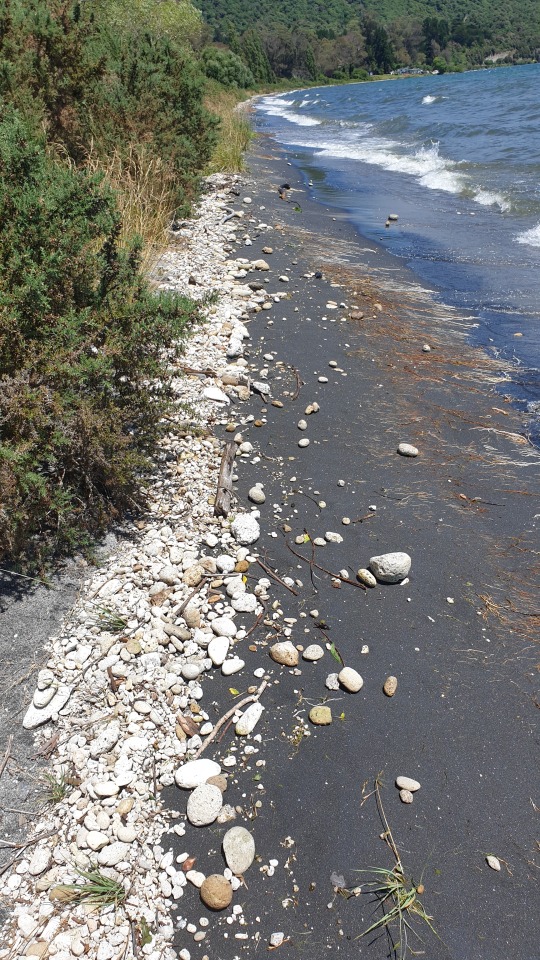
This is Lake Taupō, a very large lake in the middle of the North Island, and the most active supervolcano in the world. The last big eruption, about 230 CE, blew out over 100 cubic kilometers of rock, much of it over seven or eight minutes. The previous one, 25750 years ago, blasted out over 10 times that. Large parts of the island were buried in hundreds of meters of red-hot volcanic ash, travelling at just under the speed of sound, that settled still hot enough to fuse into ignimbrite rock. The very term ignimbrite was coined in New Zealand to describe this kind of pyroclastic deposit. Microscopic diatoms from the lake sediments have been found mixed with the ash that landed in the Chatham Islands over 800km away. It's also made a nice dating layer in the Antarctic ice cap.
And if all this ash and the volcanic domes and geothermal fields around the lake weren't enough, the fact that the lake has black beaches, with a strandline of fist-sized pumice, and steep cliffs around the periphery, should be a big clue that this is not a healthy place to be. At least over geological periods. In theory there should be a little warning the next time the supervolcano decides to blow out a crater the size of Singapore.
@purrdence and I stayed at two places around the caldera - Taupo township, and a much smaller place on the southern end of the lake with a name that translates as 'Sandfly and all his mates'. Both venues had geothermal hot tubs attached. We also visited the Craters of the Moon geothermal field, and the Huka Falls cascade.

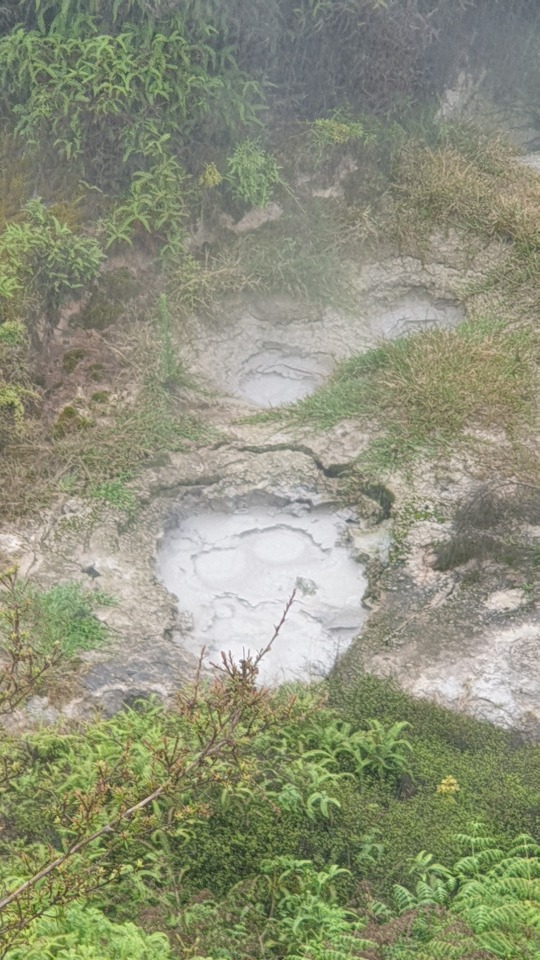
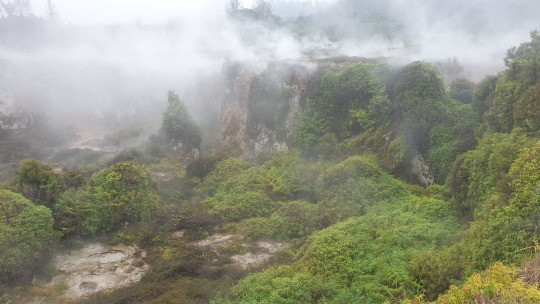
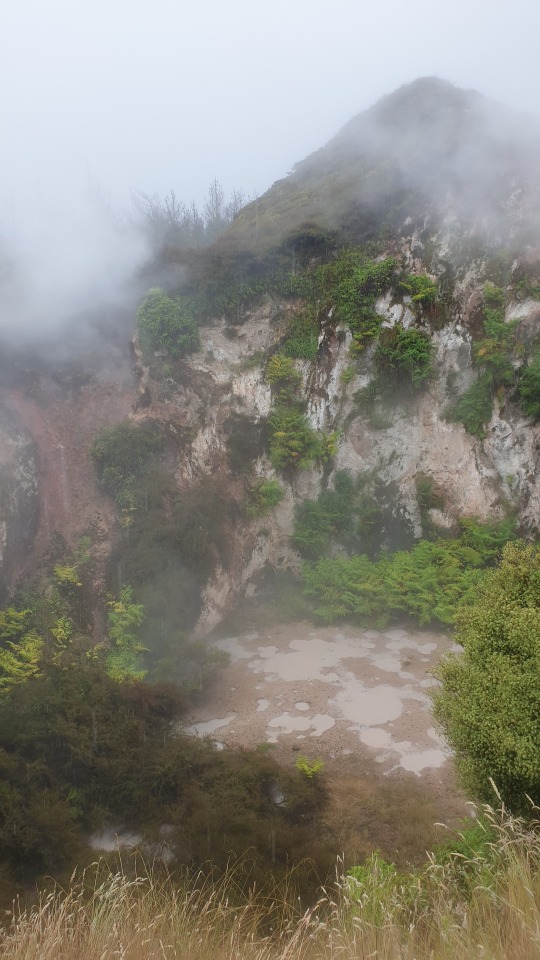

Craters of the Moon was certainly pungent - the numerous fumeroles and mudpots percolate a lot of sulphur, arsenic and other elements. One of the now-collapsed fumeroles, the Devil's Trumpet, used to be nocturnal pyrotechnic display, after guides threw kerosene-soaked sackng in and got a 50-foot column of fire in responce.
Some of the species I've seen before - most from Purrdence's visit to the area a year earlier, but also some from Australia. And at least two from my carport here in Perth.
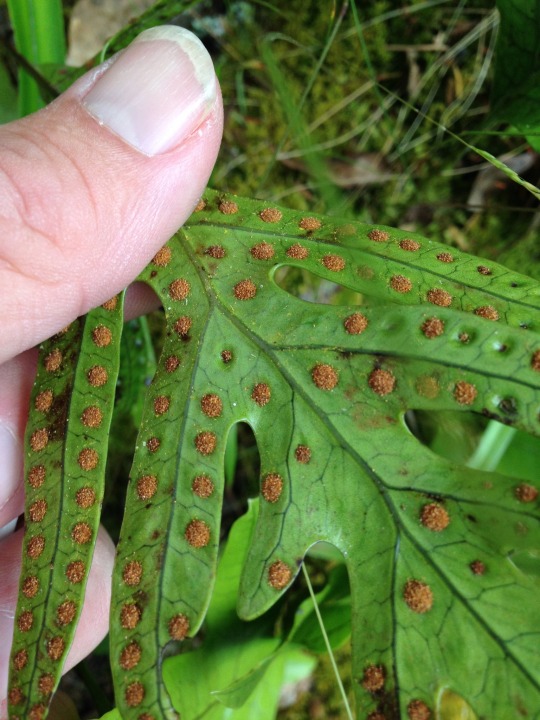
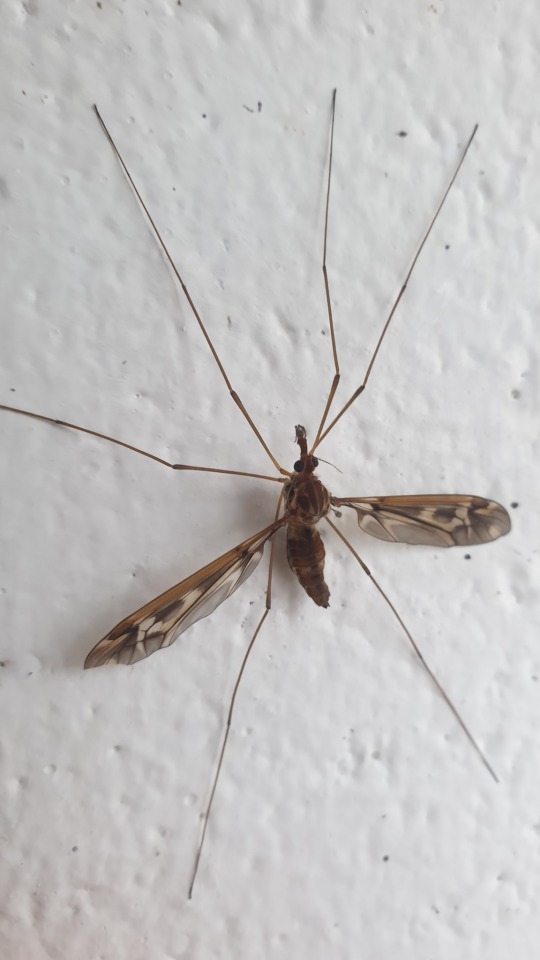


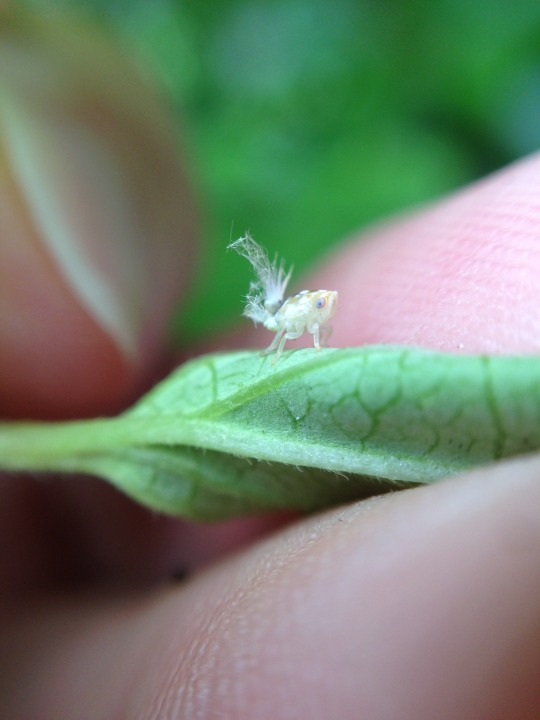

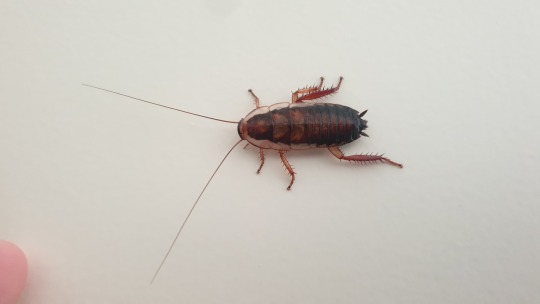
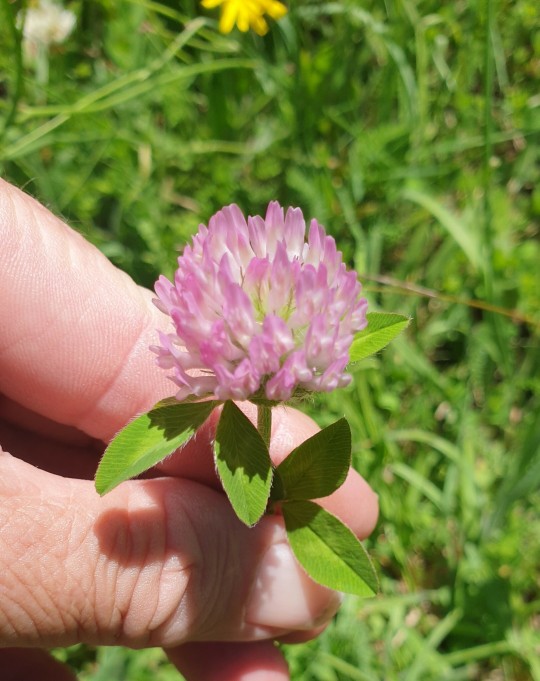
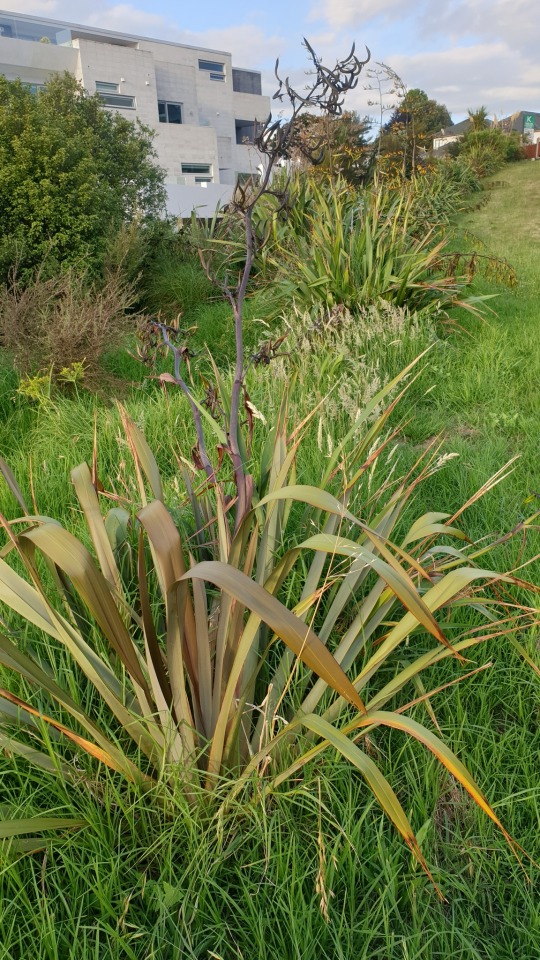


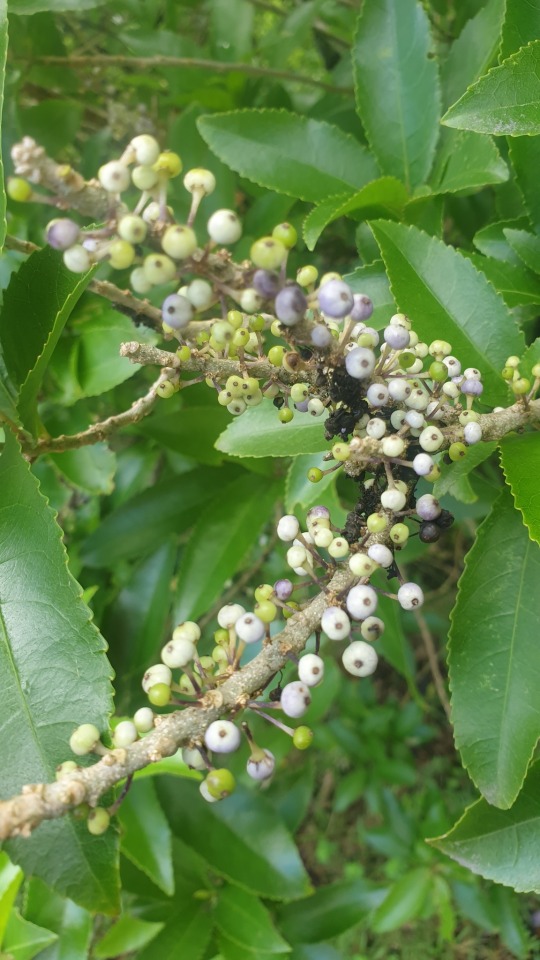

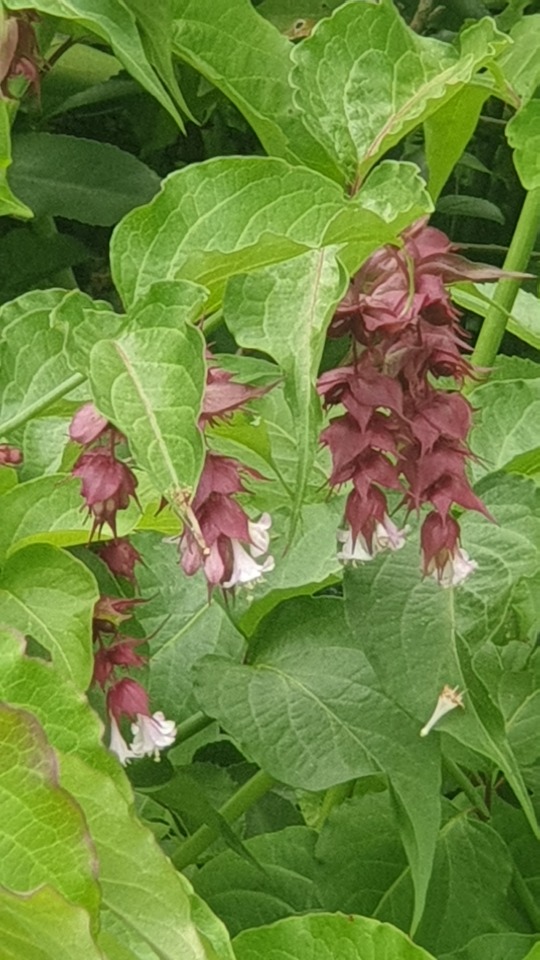
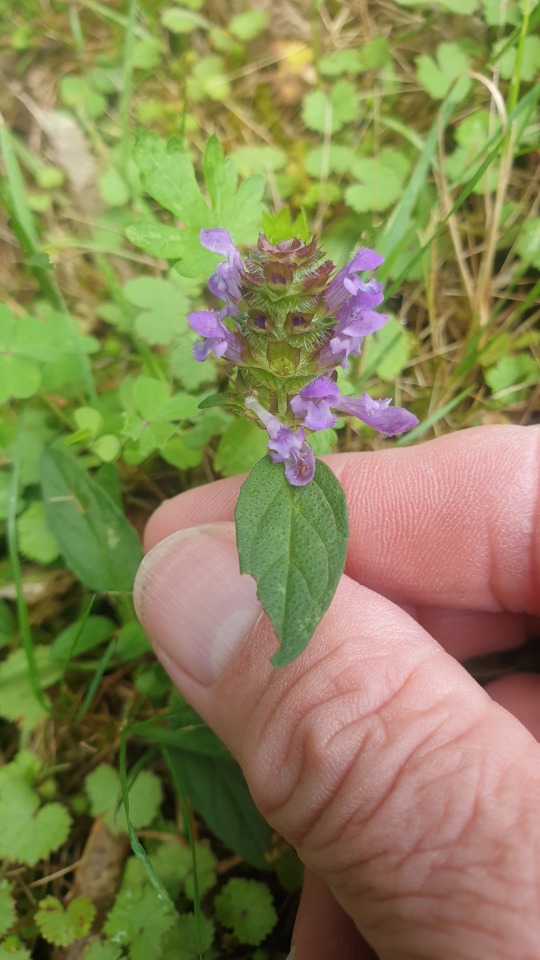
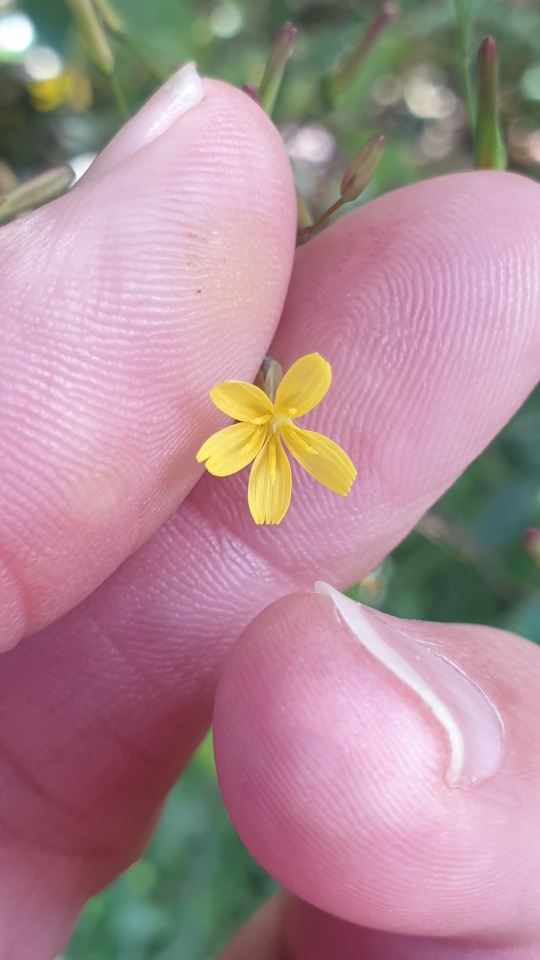
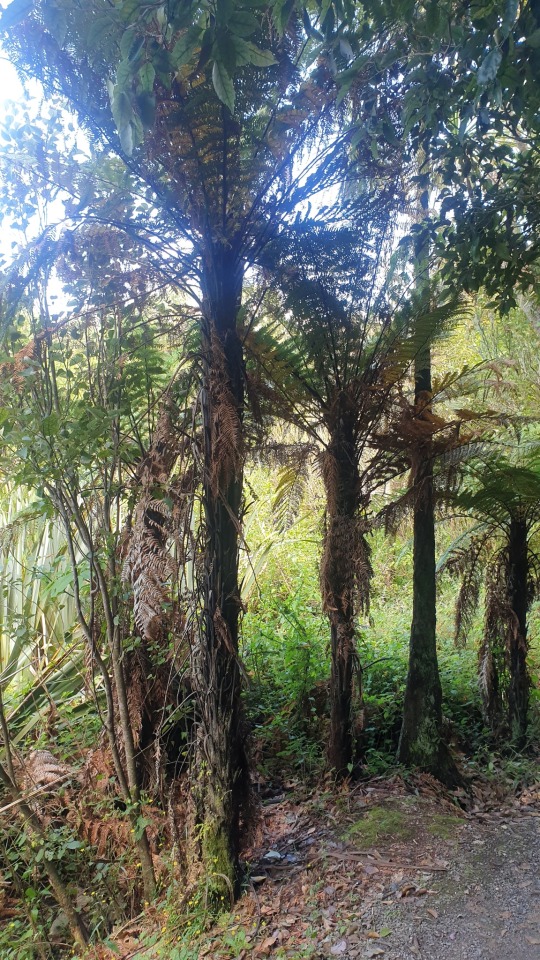
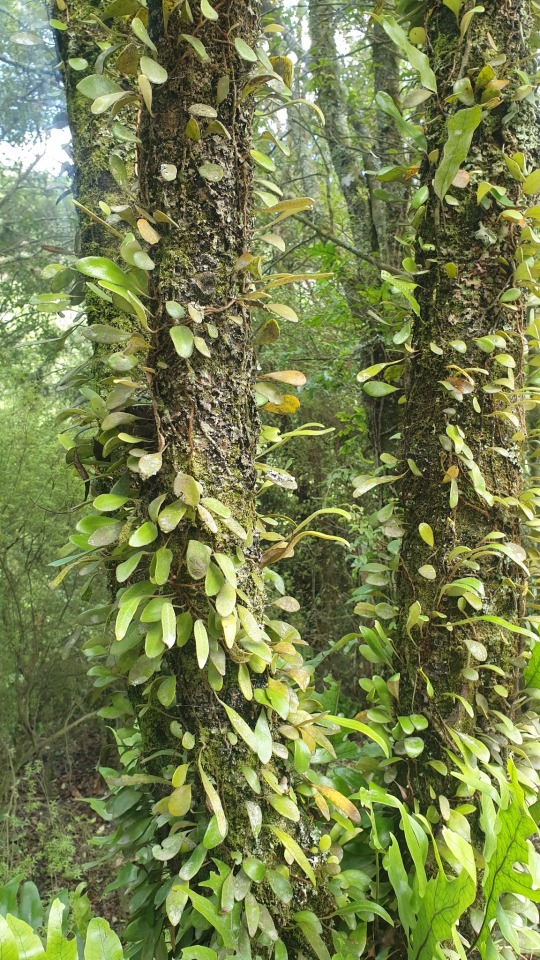

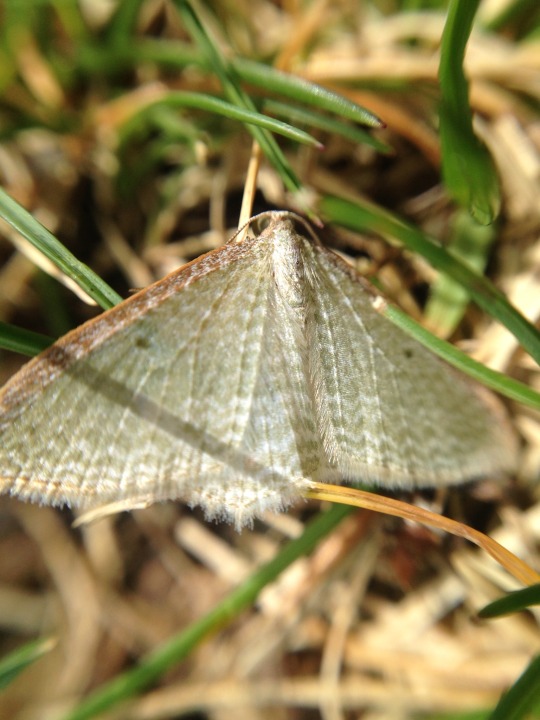
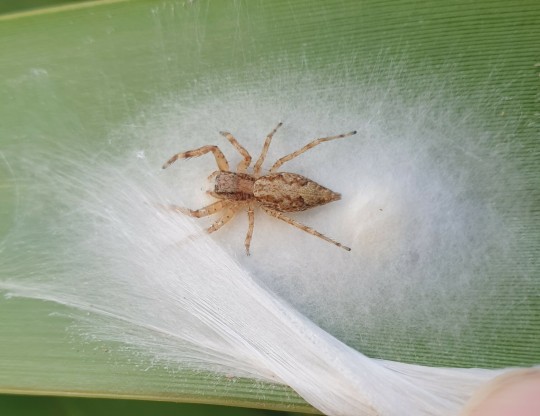
#new zealand geology#new zealand volcanoes#supervolcano#caldera#ignimbrite#pumice#pyroclastic rock#taupō#new zealand#aotearoa#craters of the moon#introduced species#new zealand fern#new zealand moth#weed#invasive species#australian bug#australian spider#australian cockroach#new zealand fly#australian lacewing#new zealand tree#clover#huka falls#tokaanu
4 notes
·
View notes
Text
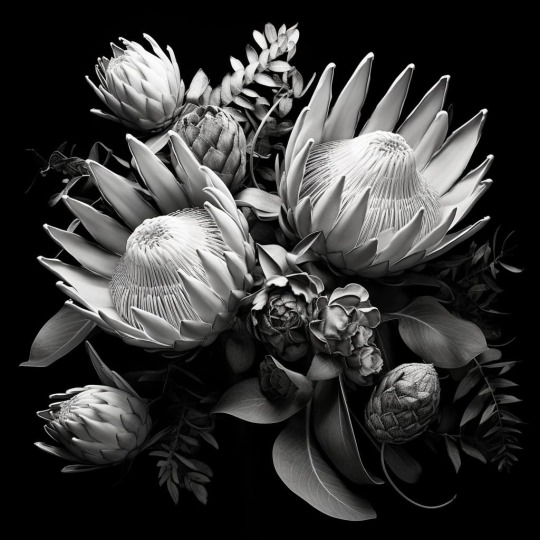
ℐ𝓃𝓉𝓇𝑜𝒹𝓊𝒸𝓉𝒾𝑜𝓃 𝒯𝑜 𝒮𝒽𝒶𝒹𝑜𝓌 𝒲𝒾𝓉𝒸𝒽𝒸𝓇𝒶𝒻𝓉 ℬ𝑜𝓉𝒶𝓃𝒾𝒸𝓈 𝒫𝓇𝓉 𝟸 Aɴ Aᴜsᴛʀᴀʟɪᴀɴ Gᴜɪᴅᴇ Tᴏ Usᴇғᴜʟ Hᴇʀʙs﹐ Fʟᴏᴡᴇʀs ﹠ Oᴛʜᴇʀ Bᴏᴛᴀɴɪᴄᴀʟs. Australian native plants are a rich source of botanical diversity, offering a multitude of herbs, shrubs, and trees that have been utilized for various purposes, from culinary and medicinal to spiritual and ritualistic. In the realm of shadow witchcraft, which is often associated with dark and mysterious practices, many native Australian plants hold a sacred and sometimes even poisonous significance. These plants are revered for their unique properties and the connections they establish between practitioners and the spirit world. Many plants, herbs, flowers and other botanicals Witches use in the Northern Hemisphere are not available in Australia- the following are commonly found throughout Australia and are respectfully used by the custodians of the land, and its sacred Elders.
One of the most iconic and potent Australian native plants associated with shadow witchcraft is the Brugmansia, commonly known as the Angel's Trumpet or Daytura. This plant contains alkaloids that can induce hallucinations and visions when ingested or inhaled. For shadow witches, Brugmansia is often used in ritualistic settings to commune with the spirit world and gain insights into the mysteries of the beyond. However, its poisonous nature makes it a plant to be handled with extreme caution.
Another plant with a deep connection to shadow witchcraft is the Duboisia hopwoodii, commonly referred to as Pitcher Plant. This carnivorous plant produces toxic compounds, including scopolamine and atropine, which can induce hallucinations and delirium when ingested. Shadow witches are known to use this plant to enhance their psychic abilities, gain insight into the hidden realms, and enter altered states of consciousness.
The Tasmanian Devil's Marbles, scientifically known as Euphorbia obesa, are a group of succulent plants native to Australia. Their peculiar appearance has led them to be associated with mysticism in the realm of shadow witchcraft. These plants are believed to contain energy that can be harnessed for protection, divination, and banishing negative influences. Ingesting any part of these plants can be toxic, making them a powerful but perilous tool in the hands of shadow witches.
The Stinking Roger, or Tagetes minuta, is another Australian native plant with a connection to shadow witchcraft. It is known for its pungent odor, which is said to repel evil spirits and negative energies. Shadow witches often use this plant as a protective herb in rituals and spells to create a barrier against malevolent forces. It is not inherently toxic but should be used cautiously due to its strong aroma.
The Sandpaper Fig, or Ficus coronata, is a bushy native Australian plant that has been associated with shadow witchcraft due to its unique texture and appearance. The leaves of this plant have a sandpaper-like texture, symbolizing the concept of "rough magic." Shadow witches may use the Sandpaper Fig in spells and rituals to manifest change, overcome obstacles, and disrupt the status quo. Ingesting the leaves is not recommended, as they may cause digestive discomfort.
The Smokebush, or Conospermum stoechadis, has significance in shadow witchcraft due to its ethereal appearance and the mystical aura it emits. Its unique, cloud-like flower clusters give it an otherworldly quality, making it a plant associated with the veiled realms. Shadow witches may use the Smokebush in spells and rituals to call upon the spirits of the departed or to enhance divinatory abilities. While not inherently toxic, it should be used with respect and care.
The mysterious Black Kangaroo Paw, or Anigozanthos manglesii, is a plant associated with shadow witchcraft due to its striking dark color and its symbolism as a gateway to the hidden realms. Shadow witches may use the Black Kangaroo Paw in rituals to explore the shadow self, work with the energies of transformation, and connect with ancestral spirits. Ingesting any part of this plant is not recommended, as it can be potentially harmful.
The Australian native Sturt's Desert Pea, or Swainsona formosa, holds a sacred place in the practices of shadow witchcraft due to its striking crimson flowers and its connection to the spirit world. This plant is believed to be a bridge between the living and the deceased. Shadow witches may use the Sturt's Desert Pea in rituals to communicate with the souls of the departed and seek guidance from the other side. While the plant itself is not poisonous, it should be used with reverence for its spiritual significance.
The Purple Loosestrife, or Lythrum salicaria, is a plant native to Australian wetlands and is linked to shadow witchcraft due to its vibrant and alluring appearance. Shadow witches may use this plant in love spells and enchantments to manipulate the emotions and desires of others. While not poisonous, it should be used with ethical considerations and an awareness of the potential consequences.
The Sundew, or Drosera spp., is a group of carnivorous plants native to Australia, known for their glistening, sticky tentacles that trap insects. Shadow witches may incorporate the Sundew in their practices to harness the energy of entrapment, binding, and control. While not poisonous to humans, these plants are fascinating symbols of the shadowy aspects of nature.
The Tasmanian Blue Gum, or Eucalyptus globulus, holds significance in the world of shadow witchcraft due to its association with protection and purification. Shadow witches may use its leaves in rituals to banish negative influences and ward off malevolent spirits. While not toxic, the essential oils from this plant should be handled with care and diluted properly.
The Blackwood, or Acacia melanoxylon, is an Australian native tree with dark wood and a deep, mystical significance in shadow witchcraft. Its timber is often associated with transformation, as it is used to craft ritual tools and sacred items. Shadow witches may seek to connect with the spirit of the Blackwood tree to channel its energies for personal growth and empowerment. While not poisonous, the tree's wood should be sustainably harvested to honor its sacred connection.
The Wollemi Pine, or Wollemia nobilis, is a rare and ancient conifer native to Australia that has a profound connection to shadow witchcraft. Its status as a living fossil and its resilience throughout history make it a symbol of hidden knowledge and endurance. Shadow witches may use the Wollemi Pine to gain insight into ancient wisdom and connect with the spirits of the past. Harvesting this tree from the wild is strongly discouraged, as it is a critically endangered species.
The Velvet Bush, or Lasiopetalum schultzei, is a native Australian shrub associated with shadow witchcraft for its velvety, dark foliage. Shadow witches may use this plant in spells and rituals to connect with the energies of mystery and transformation. While not toxic, the Velvet Bush should be used with reverence for its symbolic significance in shadow magic.
The Grey Spider Flower, or Grevillea buxifolia, is a native Australian plant with spidery, otherworldly flowers that have a mystical quality associated with shadow witchcraft. Shadow witches may use this plant in rituals to communicate with spirit guides and to tap into the secrets of the unseen realms. While not poisonous, the Grey Spider Flower should be approached with respect for its spiritual significance.
The Black Kangaroo Paw, or Anigozanthos manglesii, is a unique and striking Australian native plant that holds a special place in shadow witchcraft due to its dark color and symbolic connection to the hidden realms. Shadow witches may use the Black Kangaroo Paw in their rituals to explore the mysteries of the shadow self, facilitate transformation, and communicate with ancestral spirits. While not inherently toxic, this plant should be handled with care and respect for its sacred associations.
The Devil's Twine, or Cassytha glabella, is a parasitic plant native to Australia that has gained notoriety in shadow witchcraft due to its enigmatic growth and ethereal qualities. Shadow witches may incorporate the Devil's Twine in their spells and rituals to enhance their psychic abilities and explore the boundaries between the living and the spirit world. While not poisonous, it should be used with caution, as it is a plant that embodies both mystery and connection.
The Finger Lime, or Citrus australasica, is a small, citrus-bearing tree native to Australia, and its unique fruit is associated with shadow witchcraft for its symbolism of hidden revelations and unexpected knowledge. Shadow witches may use the Finger Lime in rituals to reveal hidden truths and access concealed information. While not toxic, the fruit should be used with intention and respect for its symbolic significance.
The Desert Bloodwood, or Corymbia opaca, is a native Australian tree with dark, gnarled bark and a connection to shadow witchcraft. Its resilience in harsh environments and its deep-rooted nature make it a symbol of inner strength and transformation. Shadow witches may use the Desert Bloodwood in rituals to access their inner power, overcome obstacles, and harness the energy of change. While not toxic, this tree should be approached with a sense of reverence for its symbolic associations.
The Australian Shepherd's Purse, or Capsella bursa-pastoris, is a plant with small, heart-shaped seedpods and is associated with shadow witchcraft for its symbolism of hidden desires and secrets. Shadow witches may use the Shepherd's Purse in spells and rituals to uncover concealed truths and tap into the realm of the subconscious. While not toxic, it should be used with a sense of intention and respect for its symbolic significance.
The Queen of the Night, or Selenicereus grandiflorus, although not native, it can be commonly found. Queen of the Night is a cactus with night-blooming, fragrant flowers that have associations with shadow witchcraft. The mysterious and ephemeral nature of these flowers makes them symbols of hidden desires and forbidden knowledge. Shadow witches may incorporate the Queen of the Night in their practices to access the hidden aspects of themselves and explore the depths of their desires. While not poisonous, the cactus should be handled with care due to its spines.
The Flannel Flower, or Actinotus helianthi, is a native Australian plant with delicate, daisy-like flowers that have connections to shadow witchcraft due to their ethereal beauty. Shadow witches may use the Flannel Flower in spells and rituals to invoke the energies of enchantment, attraction, and the hidden mysteries of nature. While not toxic, this plant should be approached with respect for its symbolic associations. Eucalyptus, often referred to as gum trees, is an iconic Australian genus, comprising over 700 species. It has a long history of use by Indigenous Australians for medicinal purposes and forms an integral part of their cultural heritage. The leaves of many Eucalyptus species are rich in essential oils, making them valuable in the production of traditional remedies and modern pharmaceuticals. Additionally, the bark and leaves of various Eucalyptus species have been used in indigenous medicine and witchcraft practices. Kangaroo Paw, or Anigozanthos spp, is a group of plants native to southwestern Australia and is known for its strikingly unique flowers resembling a kangaroo's paw. In Aboriginal culture, the plant holds significance due to its use in traditional medicines and rituals. Its vibrant colors and distinctive shape make it a powerful symbol in shadow witchcraft, often associated with transformation and adaptability. Banksia, a diverse genus of shrubs and trees, is also deeply rooted in Aboriginal culture, with numerous species being used for food, medicine, and tools. The Banksia serrata, known as Old Man Banksia, is particularly noteworthy for its gnarled appearance and is associated with ancestral spirits in Aboriginal mythology. In shadow witchcraft, its seeds and woody cones are believed to possess protective qualities. Acacia, commonly known as wattle, is a diverse genus comprising over 1,000 species in Australia. The Golden Wattle (Acacia pycnantha) is the national floral emblem and has cultural significance for Indigenous Australians. Acacia has a long history of use in both traditional medicine and magical practices, with its fragrant blooms often employed in spells related to love, purification, and psychic enhancement.
The Tasmanian Blue Gum, or Eucalyptus globulus, is a species of Eucalyptus tree known for its aromatic leaves and distinctive blue-green foliage. It is often used for spiritual and cleansing rituals in shadow witchcraft, particularly for its association with psychic insight and dream work. In some Indigenous Australian cultures, the Tasmanian Blue Gum holds significance as a source of timber, tools, and medicines.
The Black Wattle, or Acacia mearnsii, is an invasive species originally from Australia but now found in various regions around the world. It has significance in both traditional Aboriginal medicine and shadow witchcraft, where it is often used to enhance one's psychic abilities and intuitive insights.
The Waratah, or Telopea speciosissima, is a striking native shrub with brilliant red flower heads that are a source of great beauty and significance in Australian flora. It has been used in Indigenous culture for its vibrant appearance and in shadow witchcraft for its associations with love, passion, and transformation.
The Xanthorrhoea, commonly known as grass trees, are iconic Australian plants with tall, slender trunks and tufted, grass-like leaves. These plants have various uses in Aboriginal culture, from making tools and weapons to providing food. In shadow witchcraft, the resin produced by Xanthorrhoea is often used for its protective and purifying qualities.
The Snake Vine, or Hibbertia scandens, is a twining climber native to eastern Australia. It gets its name from the twisted and serpentine appearance of its stems. This plant has been associated with various magical and medicinal uses in both Indigenous and witchcraft traditions, often linked to its sinuous form and its connection to the serpent archetype including the Dreamtime Serpent and other Australian ancestral spirits and deities. The Stinging Nettle, or Urtica incisa, is a native Australian plant known for its stinging hairs that cause discomfort when touched. In some forms of shadow witchcraft, this plant's stinging properties are harnessed for protective spells, curses, or rituals involving pain and transformation.
The Native Violet, or Viola hederacea, is a small, creeping plant with dainty violet flowers. It has cultural importance in some Aboriginal communities and is associated with protection and healing in shadow witchcraft, particularly in matters of emotional well-being.
The Pigface, or Carpobrotus spp, is a succulent plant with colorful, daisy-like flowers that are found in coastal regions. In some Indigenous cultures, the Pigface has culinary and medicinal uses. In shadow witchcraft, it is associated with protection, especially in coastal areas, and is believed to have grounding properties.
The Geraldton Wax, or Chamelaucium uncinatum, is a shrub known for its abundant pink or white flowers. It is used in shadow witchcraft for its qualities of purification and protection, often used in rituals and spells to cleanse spaces and ward off negative energies.
The Bush Tomato, or Solanum centrale, is a small fruit-bearing plant found in arid regions of Australia. It has culinary and medicinal uses in Indigenous cultures and is often associated with fertility, abundance, and nourishment in shadow witchcraft.
The Hakea, a diverse genus of shrubs and small trees, is native to Australia and has significant cultural and ecological importance. In shadow witchcraft, the Hakea is associated with resilience, adaptability, and protection, especially in the face of adversity.
The Poisonous Gimpi Gimpi, or Dendrocnide moroides/excelsa, understood to be a Kabi Kabi- a word meaning 'devil'- is notorious for its intensely painful stinging hairs, making it one of the most feared plants in Australia. In shadow witchcraft, its venomous nature is harnessed for curses and hexes, symbolizing the power to inflict pain and suffering.
The Desert Rose, or Gossypium sturtianum, is a striking, pink-flowering shrub native to arid regions. It is used in shadow witchcraft for its associations with transformation, resilience, and blooming in harsh conditions.
The Sturt's Desert Rose, or Gossypium sturtianum, is a hardy shrub native to arid regions of Australia, known for its striking pink flowers. Shadow witchcraft, is often associated with endurance, survival, and the ability to thrive in challenging environments.
The Balaustion, or Callistemon spp, is a genus of shrubs commonly referred to as bottlebrushes due to their cylindrical, brush-like flowers. It has significance in Indigenous cultures and is used in shadow witchcraft for its symbolism of cleansing, purification, and renewal.
The Blackthorn, or Bursaria spinosa, is a native Australian shrub with sharp, thorny branches and white flowers. It has been used in Indigenous medicine and holds a dark symbolism in shadow witchcraft, often associated with protection, barriers, and defensive magic.
The Fairy Fan Flower, or Scaevola spp, is a delicate, trailing plant with fan-shaped flowers. It is used in shadow witchcraft for its associations with grace, adaptability, and the whimsical world of the fae.
The Kangaroo Apple, or Solanum aviculare, is a native Australian plant with greenish-yellow fruit. It has been used in traditional medicine by Indigenous communities and is associated with transformation, shape-shifting, and altered states of consciousness in shadow witchcraft.
The Weeping Myall, or Acacia pendula, is a distinctive tree with pendulous branches and has significance in Indigenous cultures. In shadow witchcraft, it is associated with emotional release, healing, and purification.
The Yellow Alder, or Turnera ulmifolia, is a small shrub with bright yellow flowers. It has been used in Indigenous medicine and is associated with enhancing intuition and clairvoyance in shadow witchcraft.
The Tea Tree, or Leptospermum spp, is a group of evergreen shrubs and small trees known for their antibacterial and healing properties. In shadow witchcraft, the Tea Tree is often used for cleansing and protection, especially in rituals involving purification and banishing negativity.
The Silver Banksia, or Banksia marginata, is a coastal shrub with silvery leaves and cylindrical flower spikes. It is used in shadow witchcraft for its protective qualities and its ability to ward off negative energies. The Grasstree, or Xanthorrhoea spp, is a group of slow-growing, tree-like plants with tall flower spikes. It has cultural significance in some Aboriginal communities and is associated with longevity, wisdom, and protection in shadow witchcraft.
The Emu Bush, or Eremophila spp, is a group of shrubs with colorful, tubular flowers. It has been used in Indigenous medicine and is associated with healing, transformation, and psychic abilities in shadow witchcraft.
The Dorrigo Pepper, or Tasmannia stipitata, is a native Australian shrub with small, peppery berries. It has been used in traditional Indigenous cuisine and is often associated with spicy, transformative energies in shadow witchcraft.
The Quandong, or Santalum acuminatum, is a small tree with bright red fruit. It holds culinary significance in Indigenous cultures and is used in shadow witchcraft for its associations with vitality, passion, and protection. Australia's native herbs and plants encompass a vast and diverse botanical tapestry, with deep roots in both Indigenous culture and the realm of shadow witchcraft. The connections between these plants and their spiritual and magical attributes are rich and complex, reflecting the intricate relationship between the natural world and the human psyche in this unique and ancient land. Whether used for healing, protection, transformation, or other mystical purposes, these native Australian plants continue to play a significant role in the spiritual and cultural fabric of the continent. Should you have any questions about any native flora in your area and what magical/spiritual qualities they hold- feel free to ask the questions and I will answer to the best of my abilities.
My qualifications are rooted in an in-depth understanding of Australian medicinal plants, their profound medicinal values, and their sacred applications within indigenous practices cherished by the ancestral people of this land. Through years of dedicated research and engagement with indigenous communities, I have acquired a comprehensive knowledge of the unique flora found across Australia and the remarkable healing properties they possess. This knowledge extends beyond mere botanical expertise; it delves into the cultural, spiritual, and traditional significance of these plants in the daily lives and sacred rituals of indigenous peoples.
In addition to my hands-on experience, I have also earned an advanced diploma in herbal medicine, which further deepens my expertise in harnessing the therapeutic potential of native Australian plants. This formal education has enabled me to apply a scientific perspective to the rich traditional wisdom I have gained from indigenous communities, bridging the gap between ancient knowledge and contemporary herbal medicine practices. It equips me with the skills necessary to analyze, extract, and prepare medicinal remedies from these plants, ensuring they are used safely and effectively.
My immersion in the indigenous communities of Australia has been a transformative and invaluable aspect of my journey. By sitting with numerous indigenous families, I have been fortunate enough to witness and participate in their sacred rituals and medicinal practices, thereby enriching my knowledge with first-hand experiences and insights. This unique opportunity has allowed me to not only learn about the medicinal properties of these plants but also understand the spiritual and cultural contexts in which they are utilized. This profound connection to the sacred land and its people has deepened my respect for their traditions and their incredible contributions to the field of herbal medicine, making me well-equipped to honor and preserve this rich heritage. © Dʏsʜᴀɴᴋᴀ/Oᴅᴇᴛᴛᴇ ₂₀₂₃
#australian witch#native plants#herbology#Magical Properties of Australian Flora & Fauna#Witches of Australia#Magical Plants#Magical World#Shadow Magic#Shadow Witchcraft#Shadow Witchcraft in Australia#Magical Australia#Magical & Medicine Plants of Australia#The Significance of Australian Plants#Witchy herbs#Witches of the World#Shadow Witch#Indigineous Medicine#Witches of Tumblr#witches#A Witches Garden#Our Sacred Earth#The Mother Land#Ancestral Vibes#Respect Our Earth#Articles#Witchcraft Articles#Spiritual Articles#Witchy Wisdom#Medicine of Austraia#Our Plants
11 notes
·
View notes
Text
Birthdays 8.4
Beer Birthdays
Julius Deglow (1823)
William J. Seib (1836)
Rod DeWitt (1957)
Aaron Mateychuk (1965)
Five Favorite Birthdays
Louis Armstrong; jazz trumpeter, bandleader, actor (1901)
Richard Belzer; comedian, actor (1944)
Greta Gerwig; actress (1983)
Barack Obama; 44th U.S. President (1961)
William Schuman; composer (1910)
Famous Birthdays
Aleksandr Danilovich Aleksandrov; Russian mathematician, physicist, and mountaineer (1912)
Warren Avis; businessman (1915)
Béla Balázs; Hungarian poet (1844)
David Bedford; English keyboard player (1937)
George Irving Bell; physicist, biologist, and mountaineer (1926)
Henri Berger; German composer (1844)
Roger Clemens; Boston Red Sox P (1962)
Allison Hedge Coke; American-Canadian poet (1958)
Robbin Crosby; guitarist and songwriter (1959)
Gerard Damiano; film director (1928)
Don S. Davis; actor (1942)
Mary Decker; track and field athlete (1958)
Lorenzo di Pierfrancesco de' Medici; Florentine patron of the arts (1463)
Michel Déon; French novelist, playwright (1919)
Queen Elizabeth The Queen Mother of the UK (1900)
Herb Ellis; jazz guitarist (1921)
Frankie Ford; R&B/rock & roll singer (1939)
Witold Gombrowicz; Polish author and playwright (1904)
Jeff Gordon; race car driver (1971)
William Rowan Hamilton; Irish physicist, astronomer, and mathematician (1805)
Knut Hamsun; Norwegian writer (1859)
Robert Hayden; poet (1913)
Martin Jarvis; English actor (1941)
Cleon Jones; New York Mets LF (1942)
Johann Gottlob Lehmann; German mineralogist and geologist (1719)
Leopold I, Duke of Austria (1290)
Helen Kane; singer and actress (1904)
Lee Mack; English comedian, actor (1968)
Meghan Markle; actress (1981)
Ernesto Maserati; Italian race car driver and engineer (1898)
Paul McCarthy; painter and sculptor (1945)
John Newton; composer of “Amazing Grace” (1725)
Walter Pater; English author (1839)
Clara Peller; “Where’s the Beef” lady (1902)
David Raksin; composer (1912)
Paul Reynolds; English singer-songwriter and guitarist (1962)
Bernard Rose; English film director (1960)
Klaus Schulze; German keyboard player and songwriter (1947)
Percy Bysshe Shelley; English poet (1792)
Helen Thomas; journalist (1920)
Billy Bob Thornton; actor (1955)
John Henry Twachtman; painter (1853)
John Venn; English mathematician and philosopher (1834)
Louis Vuitton; French fashion designer (1821)
Raoul Wallenberg; Swedish humanitarian (1912)
Tim Winton; Australian author (1960)
Isoroku Yamamoto; Japanese admiral (1884)
2 notes
·
View notes
Text
Claire Cross - Sleep Cycle - electro-acoustic chamber music based on EEGs of sleepers
Claire Cross explores the different phases of sleep on her new record, Sleep Cycle. Inspired by the work of Jon Hassell, William Basinski, The Australian Art Orchestra and Skúli Sverrisson, Claire draws on the language of contemporary jazz, ambient music and minimalism to present a mesmerizing work that is as beautiful as it is ambitious. “This record is a bit of a turning point for me in some respects,” explains Claire. “It’s my first attempt at flexing different composition and improvisation muscles I haven’t used before. I’ve previously been very much the kind of composer who arranges lots of parts or tries to have a lot of control over the writing, and this project has been about letting go of that and leaning into a more open approach to improvisation and composing.” “By researching what shows up on EEGs during sleep, and the dominant frequencies/waves of each phase, I found limitations that could be applied to musical situations and create an overall composition arc - things such as different frequency ranges of brain wave activity feeding into note choices, the amplitude of brain waves suggesting certain dynamics, different tempos, and so on. By finding ways to differentiate each phase I was able to create 5 contrasting ‘pieces’ that moved fairly seamlessly from one to the other.” “When performed live, we put a timer on and each section runs for roughly a set time that also loosely corresponds to the ratio of each phase per cycle. We also timed each section in the studio so that the album unfolds in the same way. This explains why some compositions are quite long versus others being a bit shorter. With all of this in mind, the music is quite repetitive and slowly unfolding, but with lots of interaction from the band and interesting textures being created. One thing I wanted to be mindful of was striking a balance between ‘following the science’ vs creating an interesting musical event - so sometimes I didn’t stick to all of my limitations so religiously.” With Sleep Cycle, Claire Cross has brought to life an important new chapter in her already storied career. This is an expertly executed record, sure to appeal to lovers of minimalism, contemporary jazz and ambient music. Artwork and Design by Tornike Margvelashvili aka Mess_Montage This record was made on the lands of the Wurundjeri Woi Wurrung people of the Kulin Nation and we pay respects to their Elders past, present and emerging. Sovereignty was never ceded.
Claire Cross - electric bass and effects Reuben Lewis - trumpet and effects Merinda Dias-Jayasinha - voice and effects Kyrie Anderson - drums and bells
4 notes
·
View notes
Text

* * * *
92-year-old Rupert Murdoch announced today that he will be stepping down as chair of his media empire, including both Fox Corporation, which includes the Fox News Channel (FNC), and News Corporation, which owns the Wall Street Journal and the New York Post, among other newspapers. In 1996 the Australian-born mogul launched the Fox News Channel with media specialist Roger Ailes, who had packaged Republican presidential nominee Richard Nixon in 1968 by presenting him to audiences in highly scripted television appearances.
The Fox News Channel initially presented news from a conservative viewpoint, but over time its opinion shows, delivered as if they were news, came to dominate the channel. Those shows presented a simple narrative in which Americans—overwhelmingly white and rural—wanted the government to leave them alone but “socialists” who wanted social welfare programs demanded their tax dollars. Isolated in the fantasy world of FNC, its viewers became such fanatic adherents to right-wing politics that FNC wholeheartedly trumpeted Trump’s Big Lie after he lost the 2020 presidential election because viewers turned away from FNC when some of its personalities acknowledged that Biden had won..
Angelo Carusone, president of Media Matters for America, said today that “Murdoch created a uniquely destructive force in American democracy and public life, one that ushered in an era of division where racist and post-truth politics thrive.” Margaret Sullivan, formerly the Washington Post’s media critic, wrote in The Guardian that FNC was “a shameless propaganda outfit, reaping massive profits even as it attacked core democratic values such as tolerance, truth and fair elections.” Murdoch, she wrote, wreaked “untold havoc on American democracy.”
Murdoch sees it differently. In his resignation letter, he attacked “bureaucracies” who wanted to “silence those who would question their provenance and purpose” and “elites” who “have open contempt for those who are not members of their rarefied class.” “Most of the media is in cahoots with those elites, peddling political narratives rather than pursuing the truth,” he wrote.
Forbes estimates that their media empire has enabled Murdoch and his family to amass a fortune of more than $17 billion.
[Heather Cox Richardson :: Letters From An American]
#Heather Cox Richardson#Letters From An American#quotes#Media Matters#right wing politics#Rupert Murdoch#Faux “News”
7 notes
·
View notes